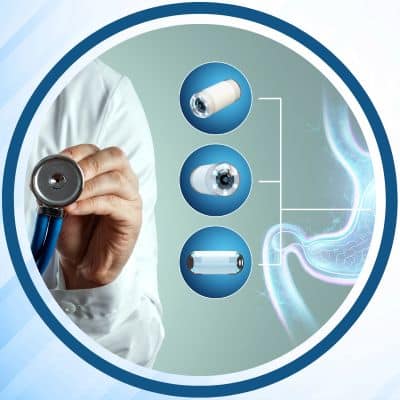As an ENT doctor, you encounter various conditions and complaints related to the nasal and laryngeal areas on a regular basis. To effectively diagnose and treat these conditions, one of the invaluable tools at your disposal is endoscopy. This article delves into the world of nasal and laryngeal endoscopy, exploring the diagnostic techniques and benefits associated with these procedures.
Understanding Nasal Endoscopy
Nasal endoscopy is a non-invasive procedure that allows ENT doctors to examine the nasal passages and adjacent structures using a thin, flexible tube called an endoscope. The endoscope is equipped with a light source and a small camera, enabling clear visualization of the nasal cavity.
During a nasal endoscopy, the patient is typically seated, and a local anesthetic is applied to the nasal passages to ensure comfort. The endoscope is then gently inserted into one nostril, and the doctor carefully maneuvers it through the nasal passages to examine the various structures, such as the septum, turbinates, and sinus openings.
Key Benefits of Nasal Endoscopy:
- Accurate Diagnosis: Nasal endoscopy provides a direct visual assessment of the nasal cavity, enabling ENT doctors to accurately diagnose conditions such as nasal polyps, deviated septum, sinusitis, or foreign body presence.
- Precise Localization: By using nasal endoscopy, doctors can precisely locate the source of symptoms such as nasal congestion, post-nasal drip, or recurrent sinus infections. This allows for targeted treatment and improved patient outcomes.
- Guided Biopsies: In cases where a biopsy is necessary, nasal endoscopy can guide the process by providing a clear view of the targeted area. This minimizes the need for more invasive procedures and reduces patient discomfort.
- Monitoring Treatment Progress: Nasal endoscopy is also useful for monitoring the effectiveness of treatment interventions. By periodically assessing the nasal cavity, doctors can evaluate the response to medication, identify potential complications, or make adjustments to the treatment plan as needed.
Exploring Laryngeal Endoscopy
Laryngeal endoscopy, also known as laryngoscopy, focuses on evaluating the structures of the larynx and vocal cords. This procedure allows ENT doctors to visualize and diagnose conditions affecting the voice box and surrounding areas.
There are two main types of laryngeal endoscopy: indirect laryngoscopy and flexible fiber-optic laryngoscopy.
Indirect Laryngoscopy:
Indirect laryngoscopy involves using a small mirror placed at the back of the throat to reflect light onto the larynx. The doctor then examines the reflected image to assess the health of the vocal cords. While this technique provides valuable information, it has limitations in terms of visualization and requires the patient’s active participation.
Flexible Fiber-Optic Laryngoscopy:
Flexible fiber-optic laryngoscopy is a more advanced and commonly used technique. It involves using a thin, flexible endoscope equipped with a light source and a camera to visualize the larynx. The endoscope is gently passed through the nose or mouth into the throat, providing a clear view of the laryngeal structures.
Benefits of Laryngeal Endoscopy:
- Accurate Diagnosis of Voice Disorders: Laryngeal endoscopy allows for a detailed examination of the vocal cords, which is crucial for diagnosing voice disorders such as nodules, polyps, vocal cord paralysis, or tumors. This information helps guidetreatment plans and interventions tailored to the specific condition.
- Evaluation of Swallowing Disorders: Laryngeal endoscopy is also useful in assessing swallowing disorders, as it allows doctors to observe the movement of the larynx and identify any abnormalities that may contribute to the problem. This helps in determining the appropriate management strategies, such as speech therapy or surgical interventions.
- Monitoring Vocal Cord Healing: After surgical interventions or trauma to the larynx, laryngeal endoscopy is employed to monitor the healing process of the vocal cords. It enables doctors to assess the progress and make necessary adjustments to the treatment plan, ensuring optimal recovery.
- Visualizing Laryngeal Pathology: Laryngeal endoscopy aids in identifying and evaluating various pathologies affecting the larynx, including infections, ulcers, granulomas, or lesions. This visual information assists in determining the underlying cause of symptoms and developing appropriate treatment strategies.
Conclusion
Nasal and laryngeal endoscopy are invaluable diagnostic techniques that empower ENT doctors to accurately assess and diagnose conditions affecting the nasal and laryngeal areas. These procedures provide clear visualization of the structures involved, allowing for precise localization of issues, guided biopsies, and monitoring of treatment progress. Furthermore, laryngeal endoscopy aids in the diagnosis of voice and swallowing disorders, as well as the evaluation of laryngeal pathology.
Roanoke Valley ENT and Allergy has incorporated nasal and laryngeal endoscopy into our diagnostic toolkit, which enables us to provide comprehensive care and tailored treatment plans for our patients. By utilizing these advanced techniques, we can improve patient outcomes and optimize the management of conditions related to the nasal and laryngeal regions.

